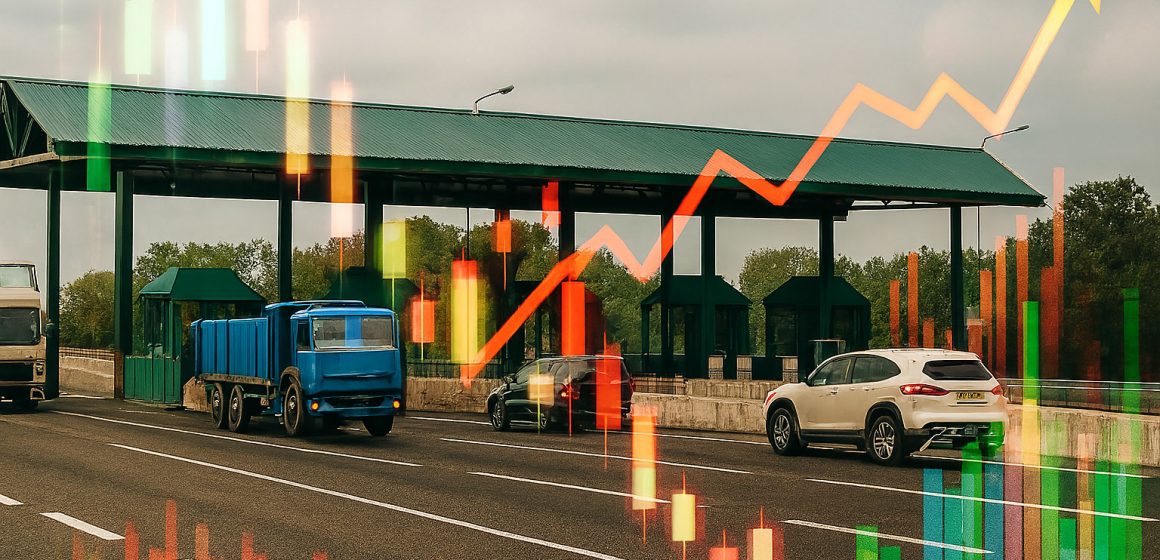The regional distribution of toll revenue has remained broadly stable over the past three years, with western and southern corridors consistently accounting for more than half of India’s national toll collections.
India’s national highway network has recorded robust growth in toll revenue and traffic volumes over the past two years, with collections rising nearly 16 per cent YoY to ₹491.9 billion during the January-September 2025 period. The surge, up from ₹424.7 billion in the same period last year, was driven by a 12 per cent increase in toll-paying vehicle throughput, which rose to 2.69 billion transactions from 2.39 billion in the year-ago period.
According to the consultancy ICRA Analytics, the growth was further amplified by periodic toll rate revisions and a higher share of heavy commercial vehicles.
Electronic toll collection on national highways also reached a record high in calendar year 2024, touching ₹579.4 billion, an 11 per cent increase over ₹523.2 billion in 2023. ETC traffic volumes rose from 3.4 billion transactions in 2023 to 3.25 billion in 2024, reflecting a 7 per cent annual growth in digital tolling adoption.
“While traffic volumes have grown strongly, toll revenues have grown even faster—partly due to a higher share of heavy vehicles and revised user fees,” said Madhubani Sengupta, Head of Knowledge Services, ICRA Analytics.
The regional distribution of toll revenue has remained broadly stable over the past three years, with western and southern corridors consistently contributing more than half of national toll collections. For the January-September 2025 period, West India led with 30 per cent of total toll revenue, followed by South India at 25 per cent and North India at 23 per cent. East and Central India together accounted for the remaining 22 per cent, reflecting a balanced traffic flow across the national highway network.
Freight Corridors vs. Commuter Belts
The analysis also highlights a clear divergence between freight-heavy and passenger-dominant regions. East, Central, and West India remain freight-centric, with commercial vehicles accounting for over half of toll traffic. Key freight corridors include National Highway (NH)-16 connecting Kolkata and Chennai through Odisha and Andhra Pradesh, NH-53 linking Surat, Nagpur, and Kolkata via Chhattisgarh’s mineral belt, and NH-6 and NH-49 serving the Northeast. In the western region, NH-48 and NH-66 anchor industrial freight flows to ports such as Mundra, Hazira, JNPA, and Dighi.
In contrast, North and South India continue to be passenger-led, with cars and jeeps forming 65 to 70 per cent of toll transactions. Dense urban clusters, commuter belts, and higher personal vehicle ownership drive this trend. Corridors such as NH-44, NH-47, and NH-52 in Central India reflect a transition to mixed-use traffic, combining long-haul freight with growing intercity passenger movement.
Sengupta added, “Overall, this pattern underlines India’s multi-modal highway usage, where central, western and eastern corridors propel freight movement, while the north and south facilitate commuter and intercity mobility.”


